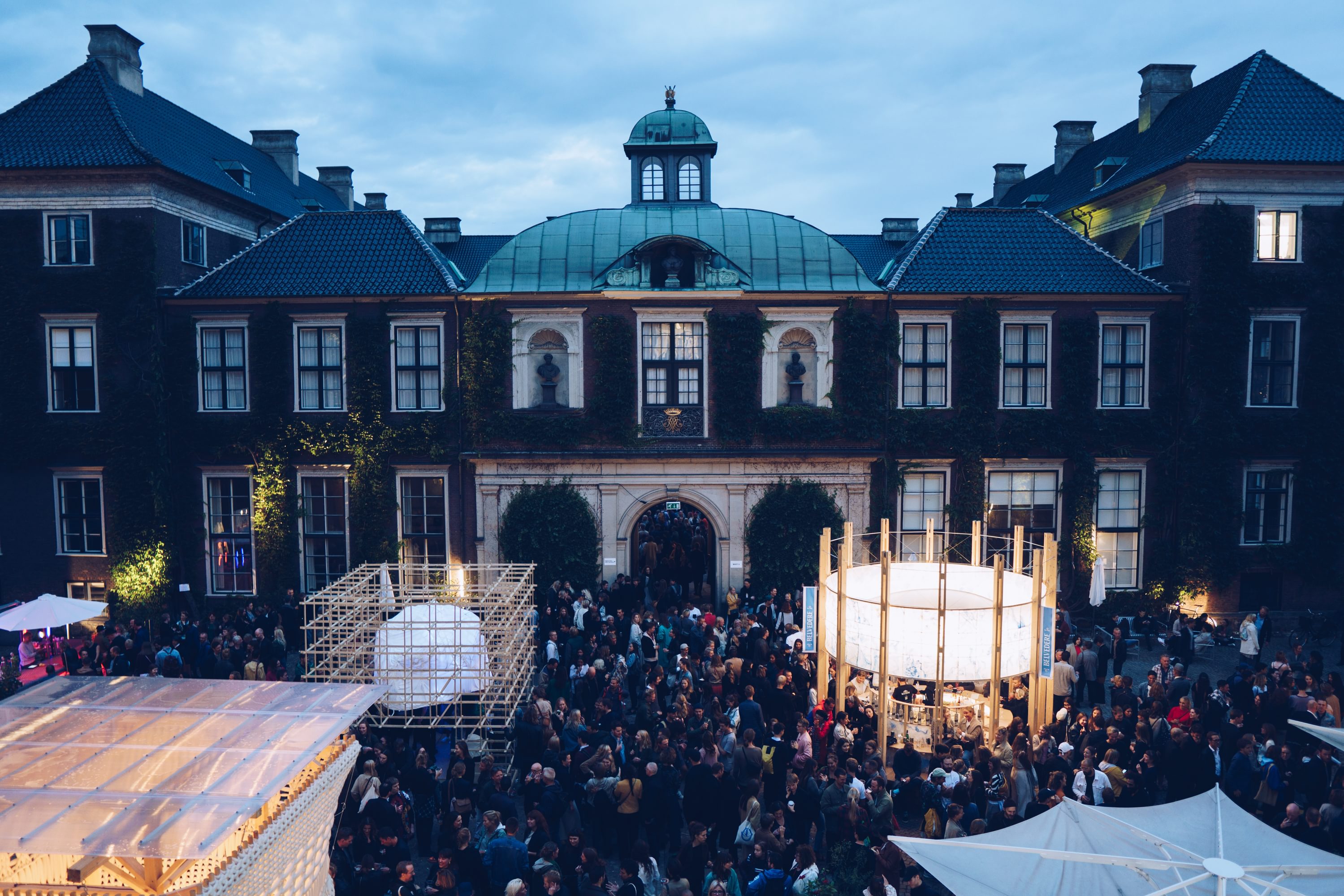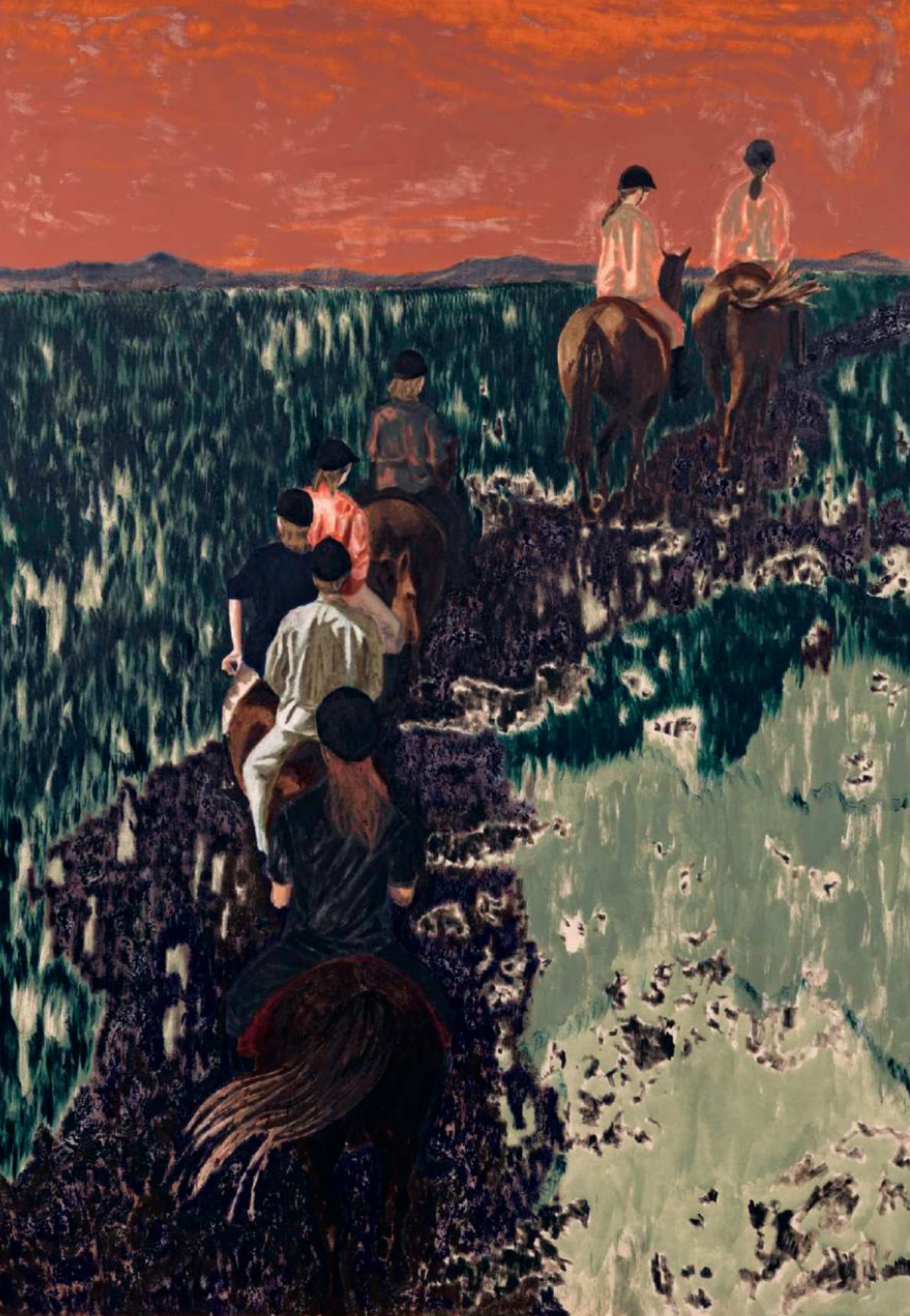The history of John Kørner’s summer studio is unwittingly relevant to his approach to his painting practice. His studio is in his family home. A large, single storey wooden house overlooking the Kattegat sea 100 km to the West of Copenhagen. The house is an old koloni, a place where large groups of school children would spend summer as a collective, like a kind of Scandinavian summer camp. The bathroom still has rows of small sinks, a long corridor of doors open to bedrooms stacked with bunk beds and a large communal kitchen and living rooms. These are state funded, traditionally to provide holidays for children whose parents may otherwise not have been able to afford the time or expense. They are based on a Scandinavian idea of ‘fællesskab’, building communal trust and community, values that are at the core of Kørner’s artistic practice, who describes his approach as ‘folkelig’ (i.e. public spirited, anti-eilitist): “There is a society that’s covering us and I want the art to be part of that. I don’t want the art to be conceptual and isolated.”
I remember when John some years ago prioritised making paintings for a show at the Copenhagen Workers Museum rather than a more prestigious international outing.
The summer camp atmosphere was reinforced when John picked me up at the local train station and drove me straight to the local jetty for a swim with his family before we went to his home studio to see his new paintings. There are 6 paintings at various stages of completion. They take a traditional painter's subject, fruit, as a conduit to raise questions of nature, climate change, globalisation and capitalism. Kørner’s recent show at Galleri Bo Bjerggaard focused on the point of sale, the Supermarket. These new paintings, being made for a solo exhibition at MOCAD – Museum of Contemporary Art Detroit focus on the production, fruit in nature, in the field, on the tree. Fruits are functional, their job is to protect, nurture and distribute seeds, to proliferate the fruit bearing tree. They have an arsenal of weapons they use to fulfil their purpose, these all rely on seduction. The tree uses fruit as honey traps, to lure their targets in and get them to work on their behalf. They flaunt their bright colours, sweet taste and heady aromas to attract birds, animals and us humans, to pick them, eat them and distribute their seeds. How brilliantly effective they are is manifest in their proliferation. They are the perfect symbol of globalised trade, transport and distribution. Their fragility and short window of ripeness necessitate fast, efficient networks to move them around the world.
Our expectation of year round availability of fruits which were, until recently, confined to specific localities by brief periods of ripeness, fragility and reliance on specific local environmental conditions to grow (moisture / heat / soil / pollinators etc.), has led to high tech farming methods and massively fuel heavy methods of transport to arrive in our shops at peak freshness every day of the year. We expect watermelon, avocado, grapes, strawberries to be available wherever and whenever we want them, regardless of location or season. This could be seen as evidence of how effectively fruit has seduced us.
Fruit taught us to see colour.
Painters have long been attracted to fruit. This could be seen as a sign of gratitude – without fruit we might not have painting as we know it. There is evidence our eyes developed colour vision in order to spot fruit at distance.
The artist's use of fruit in painting is circular, they appropriate fruit's seduction techniques. The fruit attracts the painter who, in turn, by reproducing their shape and colour, attempts to seduce the viewer of the painting. From 12th century Chinese monk Muqi Fachang’s painting Six Persimmons to today, most paintings of fruit are studies in form and colour and often vanitas paintings using the delicacy and short life of the fruit as a reminder of the brevity of our life.
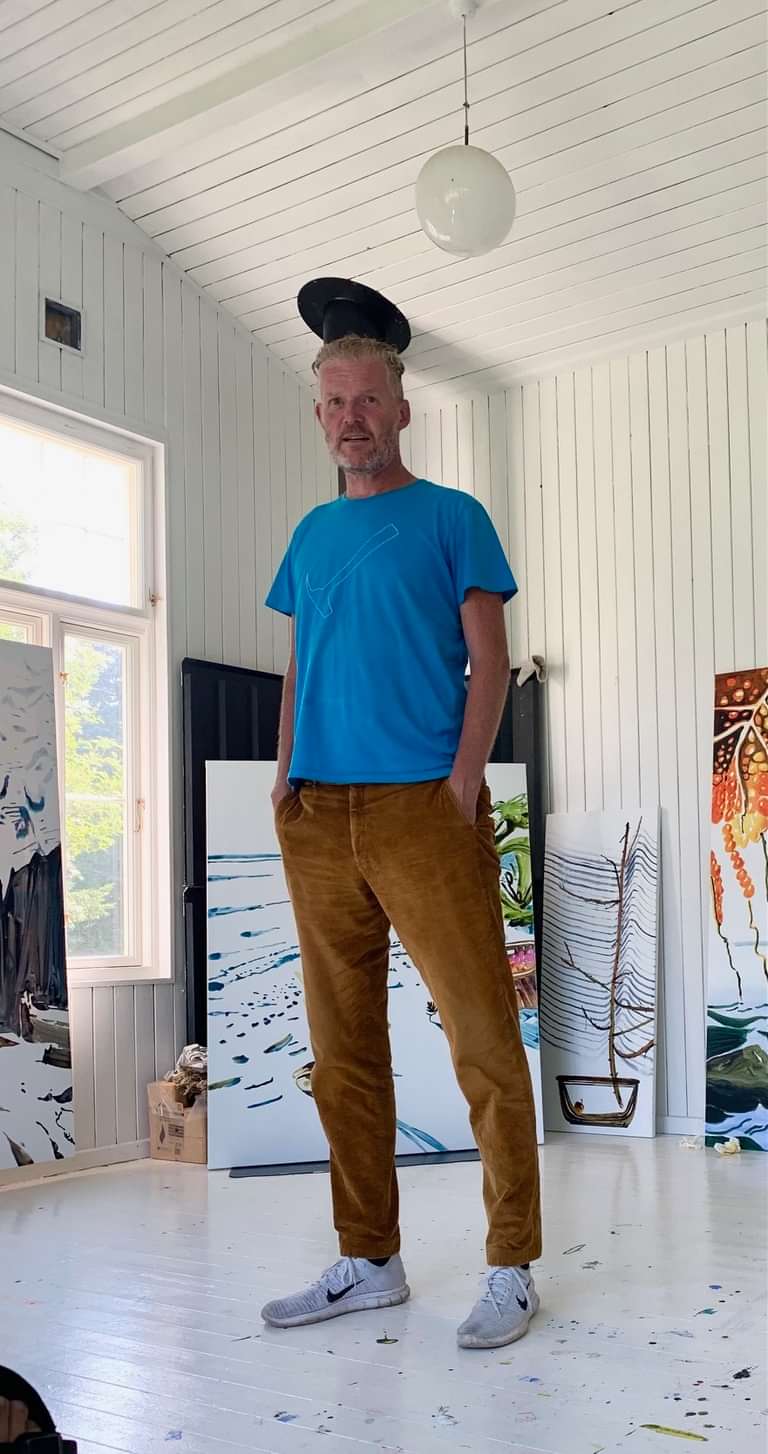
John Kørner in his studio
"There is a society that’s covering us and I want the art to be part of that. I don’t want the art to be conceptual and isolated."
In Kørner’s studio are a group of paintings in progress for the Detroit show. Still lifes of bowls of fruit, huge scenic vistas of mountain ranges, a view of a South Asian seascape, a wide vista of a woman picking fruit in rolling Southern European hills. All painted in his direct, singular style. There are watercolours lying around, where he has worked quickly to test compositions and colour combinations. The floor is strewn with travel books open on images of landscapes. These are translated directly onto canvas, without any pre-drawing. Kørner paints with the canvas lying flat on the floor, which he stands over, applying liquid paint with large brushes on the end of long sticks. He achieves a unique language of marks by making and modifying his own brushes, tying several together to make parallel lines as he drags them across the surface of the painting.
The pictorial language varies across the paintings, casually bringing in styles and techniques from geographies and periods. Some use aerial perspective to open up spatial depth, like the renaissance idea of the painting as a window, others use an Eastern style, reminiscent of traditional Chinese or Japanese scroll painting. The group of paintings are unified by the bright white ground of the canvas, which is left mostly uncovered.
As fruit is the seductive Trojan Horse for the dissemination of the seed, so the painting is of the idea. Kørner’s delicious paintings of fruit and sunny uplands smuggle potent messages regarding globalisation, capitalism and their role in climate change and inequality.
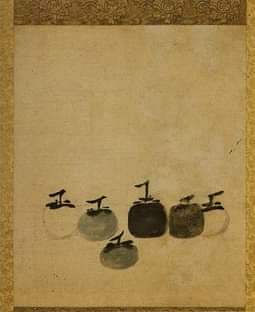
Muqi, Six Persimmons, 13th century, Southern Song (Chinese)
Collected in Daitokuji, Kyoto, Japan
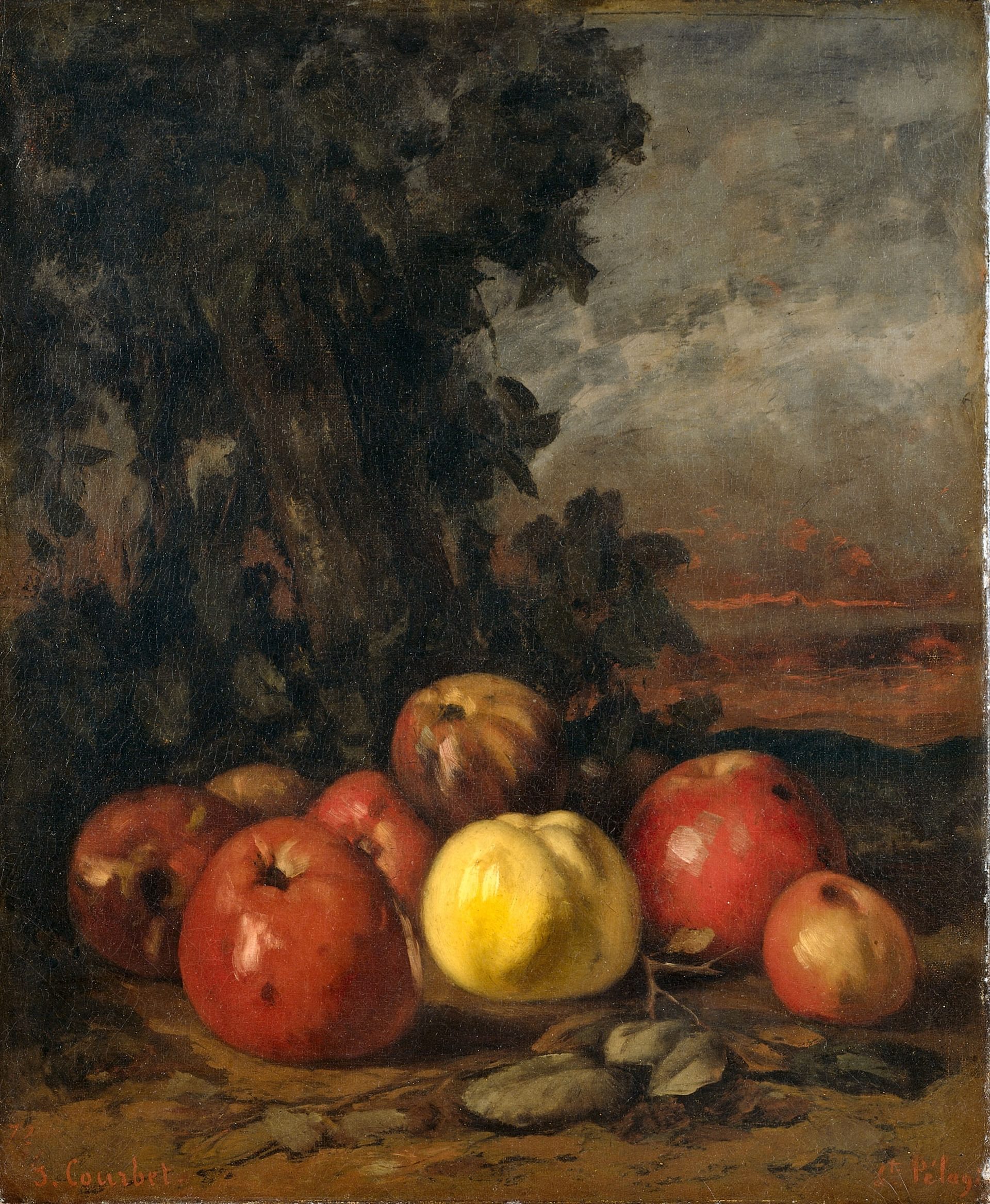
Gustave Courbet, Still Life With Apples, 1872
Mesdag Collection, Den Hague, NL
“Fruit-bearing plants trick us into distributing their seeds, and ripening fruit led to color vision. In teaching us how to find their bait, trees taught us to see that the sky is blue.”
The Overstory
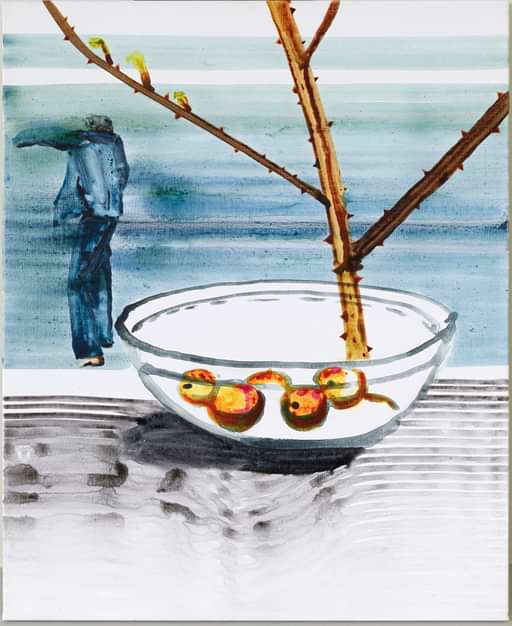
John Kørner, Stilleben with a Move, 2021
Courtesy of the artist and Galleri Bo Bjerggaard
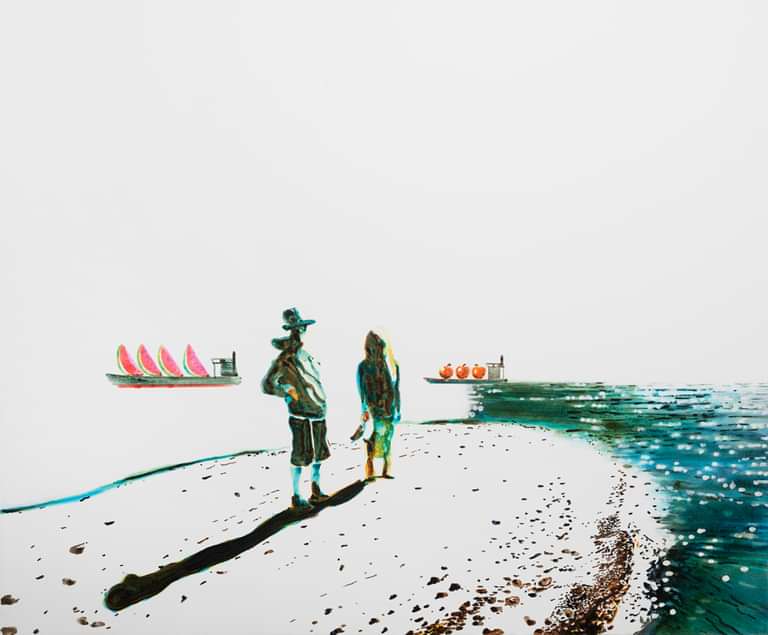
John Kørner, Grenen, 2020
Courtesy of the artist and Galleri Bo Bjerggaard
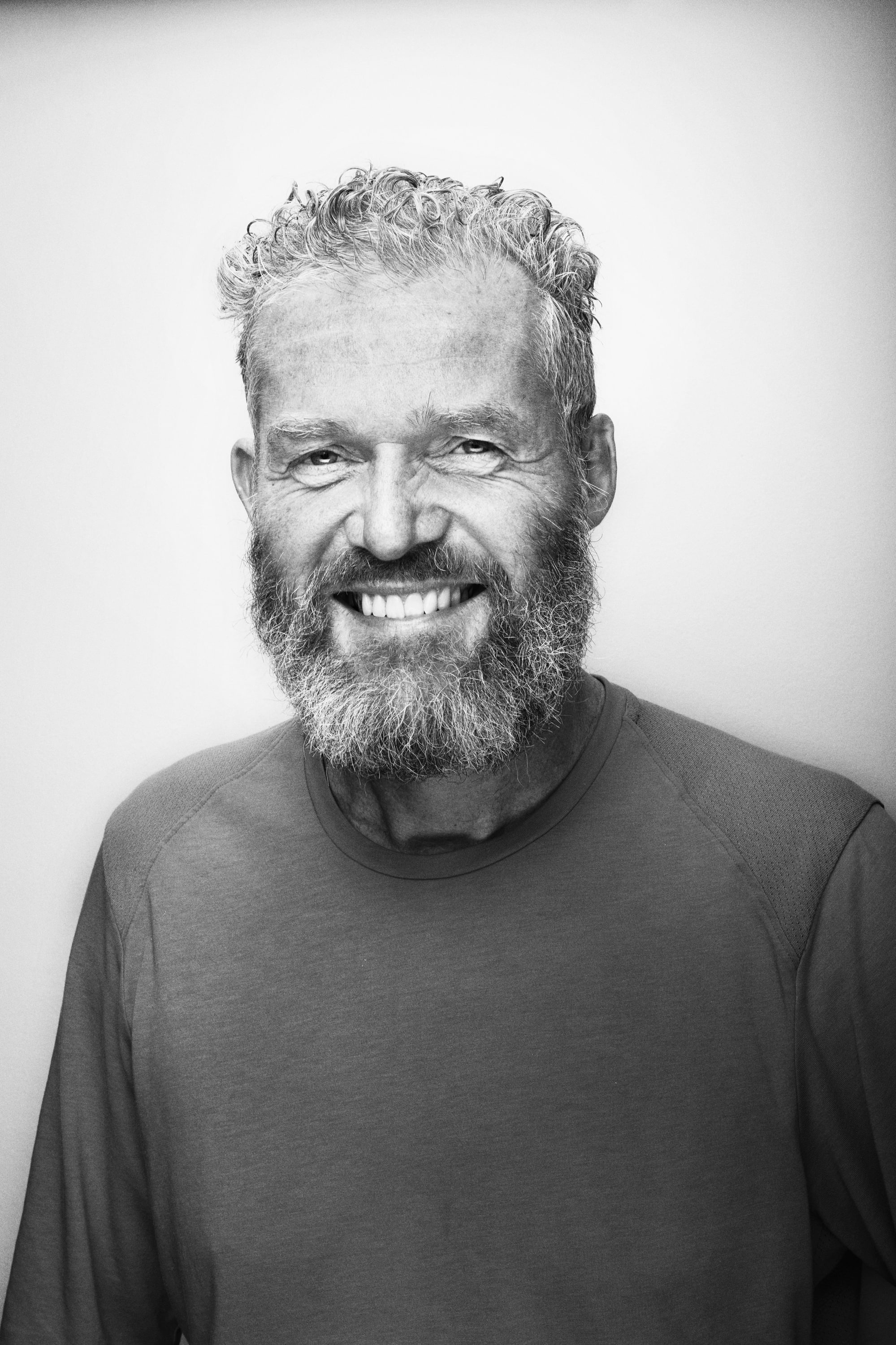
John Kørner was born in Aarhus in 1967, raised in Lolland and has lived all his adult life in Copenhagen. He graduated from the Royal Danish Academy of Fine Arts in 1998 and became widely known in 2008 when he painted a picture for every Danish soldier that had fallen in Afghanistan. In 2010, at the request of the Crown Prince Couple, he created a large mural for the decoration of the newly restored Frederik VIII's Palace at Amalienborg. The following year he held the exhibition ‘Kvinder til salg’ (Women for sale) at the Workers Museum in Copenhagen, where he addressed the trafficking problem in Denmark.
His works are represented in many public collections, including the Tate Gallery in London, the National Gallery in Copenhagen, ARKEN Museum of Modern Art in Ishøj, ARoS Aarhus Art Museum, HEART in Herning, the Moderna Museet in Stockholm, the Rubell Family Collection in Miami and the Saatchi Collection in London, to name a few.
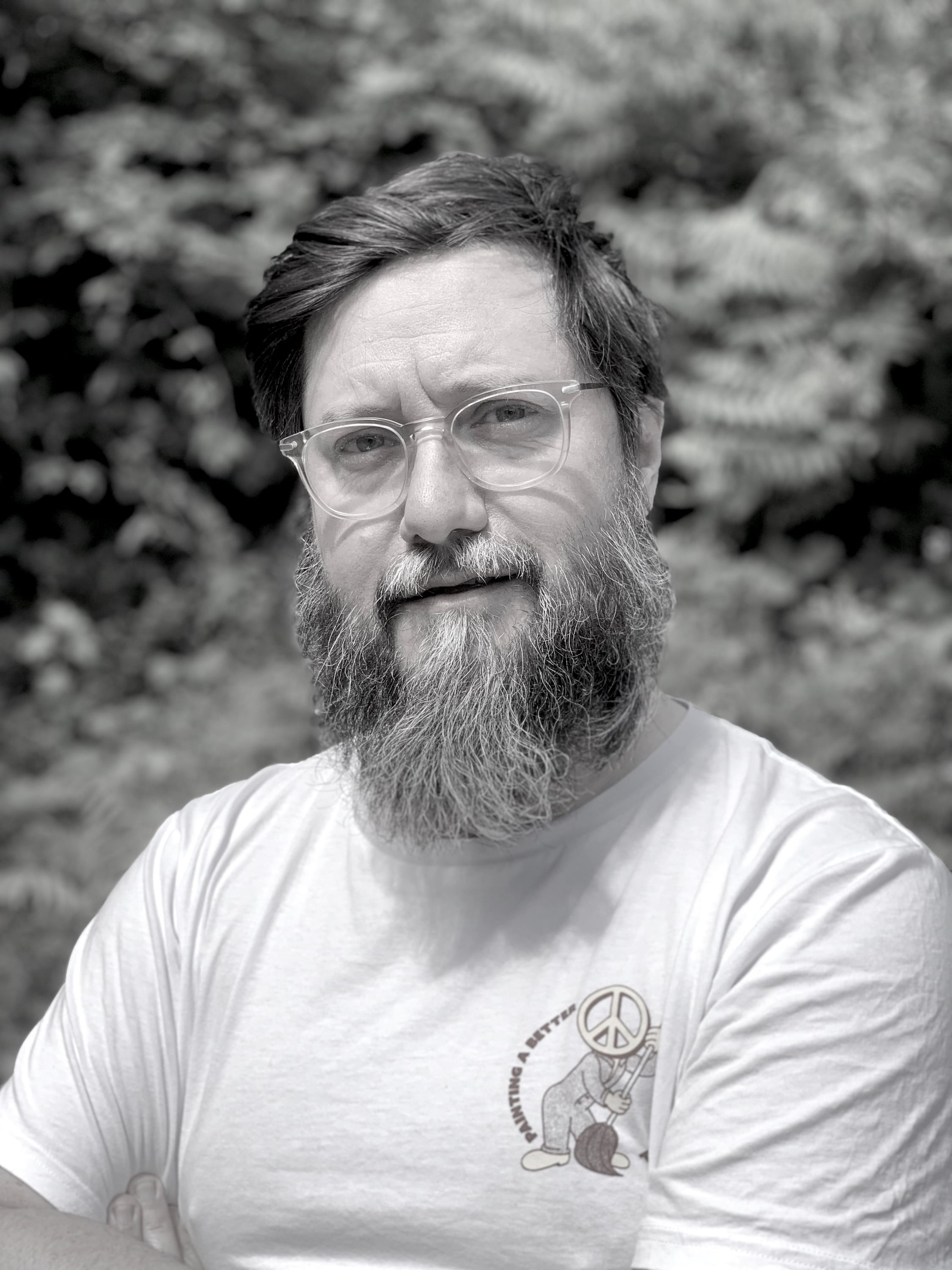
David Risley is an artist. He ran David Risley Gallery, in London (2002-2010) and Copenhagen (2010-2018). He was founding Co-curator of Bloomberg Space, London (2002-2005), Co-founder of Zoo Art Fair, London (2004), and Co-founder and Co-owner of CHART. He continues to write, curate, and develop projects with artists. He is developing a sustainability project for public-facing institutions.

